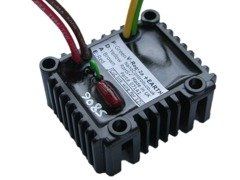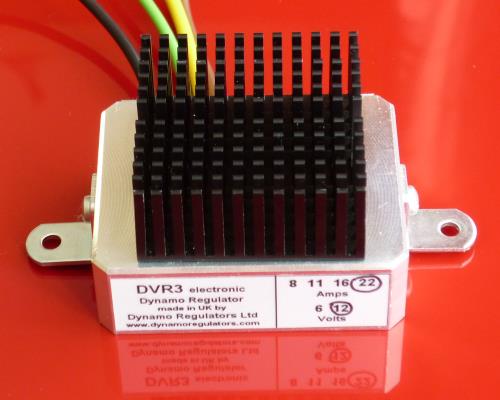Regulators
Regulators
Many charging faults blamed on the dynamo turn out to be a faulty regulator/cut-out unit. Ideally each dynamo/regulator combination needs setting up to work as a pair. The original mechanical regulator/cut-out unit needs to be set up precisely, but it will go out of adjustment as it is used. Vibration also has a major effect on the efficiency of the regulator. In our opinion, the old ‘electro-mechanical’ regulators are best replaced by a modern electronic version which provides a ‘fit and forget’ solution. After more than 20 years in the business of designing electronic circuits ourselves, I guess we would say that wouldn’t we?
Some people bring out stories of unreliable electronic regulators which ‘never worked from day one’ or ‘just packed up’. In the vast majority of cases these problems have been caused by incorrect installation. Note that there are two types of two brush dynamo wiring configurations – one has the brush/armature circuit wired in series with the field coil, the other has it wired in parallel (shunted) with the field coil (see our technical pages
for more details). To cater for this, there are two types of voltage regulator designs and it is important to use the correct type of voltage regulator to suit the dynamo wiring configuration. In most cases, the dynamo wiring can be altered internally if necessary. Most dynamo regulators have wires labelled FADE (letter order does vary) and just replace the original mechanical regulator with the same lettering. If you do fit an electronic regulator, follow the fitting instructions to the letter and there should be no problems.
For most motorcycle applications, we recommend the V-Reg II dynamo regulator from AO Services.
For more details, click here:

For most car applications where there is a larger power requirement, we recommend the DVR3 (for shunt wound dynamos) and the DVR4 (for series wound dynamos) dynamo regulators from Electrodynamic Solutions Ltd. They provide a number of versions to suit different voltage and current ratings.
For more details on the DVR3 and DVR4 regulators, click here:

The Magneto Guys
Telephone: +44 (0)1323 840203
